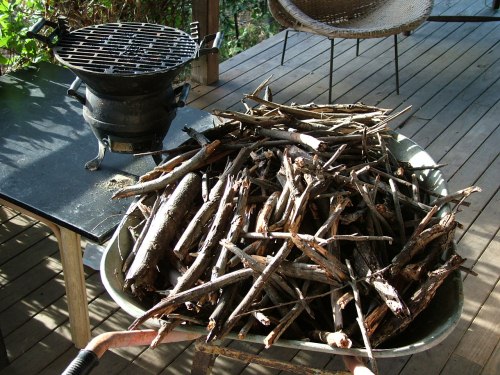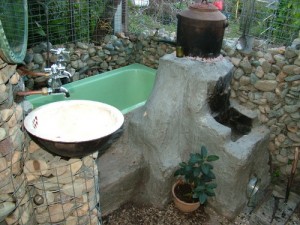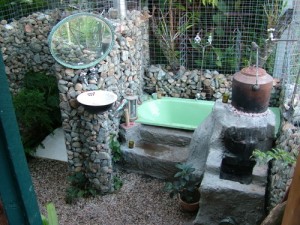A blog I read regularly posted a “sponsored” post yesterday about “natural gas”. It wasn’t in her usual writing style, and I strongly suspect she was set up.
LPG, LNG, CSG – I don’t blame you if you are totally confused. That’s what the mining companies are relying on. A quick pea shuffle and they will be allowed to extract a quick, large profit and leave a fracked countryside. There is a very, very well funded PR campaign of misinformation going on to rename coal seam gas as “natural gas from coal seams”, shortened to “natural gas”, and at the same time to convince the voting, protesting, blockading public that natural gas is clean and green and in short supply. I suspect this is part of the next stage in the campaign – sponsored posts on blogs that people who could be expected to care about the quality of our food producing land, and our environment, read. It’s cynical, ugly, and how big budget advertising messes with democracy.
Here’s the short version: LPG is liquid petroleum gas. The stuff you get in bottles for barbeques or when you fill up a car. It’s not great for the environment for all the same reasons petrol is not great. Serious action on climate change means transitioning away from it as quickly as possible.
LNG is liquid natural gas. It’s natural gas (CH4) that has been compressed and cooled so it is liquid. This makes it easier to transport, particularly for export. Australia has large conventional gas reserves mostly in WA, off the northwest coast with smaller resources in the Gippsland Basin offshore Victoria and the onshore Cooper-Eromanga Basin in South Australia. Most of it is exported.
Besides being liquefied for export, conventional gas is also used for generating electricity, heating houses, and making nitrogen fertilizers. It’s cleaner than burning coal for electricity, producing less greenhouse gases and less smog, but it’s still a significant contributor. They say we have reserves sufficient for about 60 years.
CSG is coal seam gas. It is nasty, nasty stuff. The gas itself, once it is mined and refined is CH4. It’s the getting it out that’s the problem. Coal seam gas often won’t come out on its own. It is mined in a process that uses and produces lots of contaminated water, and that often uses a process called fracking, short for hydraulic fracturing, which means pumping a toxic chemical mix down a well that goes for kilometres not just down but along. Coal seam gas also results in what is euphemistically called “fugitive emissions” – which means gas that is not captured. Lots of it. A potent greenhouse contributor, and a fire hazard.
A big problem with CSG is the sheer size of the industry. There are heading towards 4,000 active wells in Queensland and the industry is expected to increase 10 fold over the next 20 years. That’s 40,000 wells. And they’re not out in marginal, uninhabited, undisputed land. Some CSG fields are in our most valuable agricultural land, and our most precious natural environments. There are three, very large new LNG plants under construction in central Queensland (Queensland Curtis LNG, Gladstone LNG and Australia Pacific LNG). They will ship LNG made from coal seam gas out through Curtis Island, requiring dredging through World Heritage Listed Great Barrier Reef.
It’s a huge and extremely lucrative industry. Large amounts of dollars will be thrown at PR. Let’s see if the blogosphere is up to the task of combating the spin.
And the picture? I’m doing my best to transition away from LPG. The slow combustion stove is good in winter, for cooking, heating and hot water. The solar hot water system is good for summer. In fine weather I can bake and slow cook using shunt electricity a lot of the time, but I’m still trying to find good way to grill and stir fry. This little hibachi is one of the tools I’m playing with using. I can collect a barrow load of sticks in a short walk, and it helps keep the area around the house clear of fire hazard at the same time.




Hi linda
thanks for your great blog. I love it.
Can you tell me how you use shunt electricity to cook with. I have a basic understanding of what shunt electricity is (a re route of energy?) but dont know how you can access it for cooking.
we use a thermal cooker for cooking alot and it saves us energy..
for the earth Sharon
Well done for publishing this! This is a global problem and *spin* is just straightforward dishonest.
Thank you for your post. It is truly amazing the way the csg companies portray themselves to be so squeaky clean. The tv ads they put on around news time for peak viewing are positively nauseating. The csg companies and the state government will stop at nothing to get what they want and if that means special legislation to control the masses, then I would not be surprised. However, with groups like Knitting Nannas Against Gas and Chooks Against Gas, at least we will have fun as they beat us down. Joy
We are trying to transition away from gas too. We have a gas oven and a gas fridge. We are working towards getting the slow combustion stove in (with solar hot water for back up) and a 12 volt fridge. I will not be a part of this industry.
Hi Sharon, my situation is different to most. We have stand alone solar power. We have a 4.5 kva system now – 18 panels on our shed roof and a bank of batteries and a regulator in it. Since we’re so used to being energy efficient, our normal household uses (fridge, washing machine, tv, computer, lights, etc) use just a fraction of the output on a fine day. By 10 am, the system is shunting power because the batteries are full. So I turn the slow cooker on, or the George Foreman oven. If you have back to grid power, it’s not so simple, but I think the same principle applies. If you only get the 8c a kilowatt price for your power, then you are probably better off using it in the daytime for cooking.
Hi Linda, We are in the process of building a new, passive-solar house in the suburbs. We were going to get solar panels to roof/solar hotwater for (a portion of) house power and water heating, plus gas cooktop/electric oven combo in the kitchen. If I read this post correctly, it means that there is no ‘good option’ for the gas supply to a gas cooktop, and it would be better to go with an electric stovetop and solar panels for cooking energy in the suburbs? We have no good firewood option and the suburbs are quite polluted with smoke from combustion stoves/fireplaces in winter as it is.
I would be very interested in your views on whether electric cooking or gas cooking is the better option in a conventional kitchen.
Cheers, Liesel
Hi Liesel, it’s an interesting question! It depends a bit on where you are. I think my first reaction is that you just do your head in and hogtie yourself trying to single-handedly confront the society we live in. Luckily personal best interest and social best interest coincide almost always if you can get through the spin. I much prefer to cook with gas, and it’s cleaner burning than electricity from coal fired stations. Problem is that with the new LNG plants, there will be much more accessible export market for gas, and the price will climb to meet the export price. This makes “unconventional” mining, or CSG lucrative because it makes gas much more expensive – nothing to do with shortage, everything to do with the export market. (The madness is that we are helping make gas more expensive for ourselves by allowing Origin Energy, US energy giant ConocoPhillips and China Petrochemical Corp to dredge through the Barrier Reef – a lose-lose deal if ever there was one!).
So I think there is no hypocrisy in objecting to CSG and using gas, but gas may become quite expensive, at least in Queensland and NSW. If you can get your energy efficiency good enough so that you aren’t using all the solar power you produce, that’s the cheapest and cleanest source of energy, but only when the sun is shining. If you’re buying in energy, then the electricity you buy may come from a gas powered station anyhow so you might as well use the gas first off. I don’t know how all this will play out for LPG – liquid petroleum gas – the kind you get in the big bottles if you are in a place without piped gas. That’s another interesting question.
Thank you.
Just thank you.
Pingback:Two good posts | Foodnstuff
So, perhaps the better option is to use solar panels, have electrical appliances, and boost this on cloudy days with electricity purchased on a ‘green’ electricity plan? (Thus avoiding gas powered stations producing our electricity?)
As a law academic trying to scheme up law reform proposals to change social norms about food production from the top down, yes, I professionally hog-tie myself in competing arguments every day 🙂 Hopefully the pay-off is living long enough to see the ideas implemented on a large scale.
Pingback:In My Kitchen in March
Pingback:Blockading Bentley